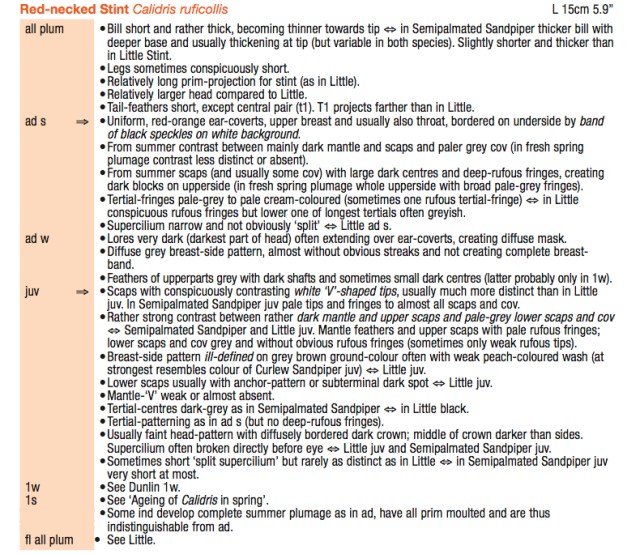Advanced Bird ID Guide by Nils van Duivendijk

I heard rumours from a Dutch friend some time back that the Advanced Bird ID Guide was going to be published in English. He explained the concept of the book. It's a simple idea: to describe every plumage of every species recorded in the Western Palearctic. I was, as you can imagine, extremely excited about the prospect. He went on to explain, though, that the book was simply text listing the key features. The thought of an ID guide with no illustrations left me a little cold and dampened my initial enthusiasm. However, I was still extremely keen to get my hands on the book, open it up and find out just how good a text-only identification guide could be.
From the moment I started reading the text, I was engrossed. The style of the book lends itself well to being used; the advantage of this is that you can easily dip in and out, reading individual species texts, discovering amazing little bits of knowledge as you do so. Nils van Duivendijk has spent his life gathering together a mind-blowingly vast array of field characteristics for 1,300 species and all of their recognisable subspecies found throughout the Western Palearctic. The work that has gone into this book really is phenomenal. It soon became clear that my previous hint of scepticism towards a book with no illustrations was ill-founded. This book is great. In many ways it's even better than expected.
There is, though, one point that I should make before I continue. For birders who are just starting out, buying this book might end up being something akin to running before you can walk. Every taxon likely to be encountered in the Western Palearctic is covered, right from Magpie to American Sandwich Tern, and every species account gets the same layout in the text, namely a set of bullet points highlighting the key features needed to identify and in many cases age and/or sex individuals of that species. However, many of these species texts do not deal with the general characteristics of the family and it is assumed that the reader will have a fair knowledge of the bird they are watching. Take the following two extracts, for example:
Oystercatcher

For a species like Oystercatcher, it is assumed that everyone reading the book will be familiar enough with the species to not require any guidance to its identification. Indeed, if you didn't know what the species looked like, the text would be of very little use. The text instead concentrates on ageing the species based on features likely to be visible in the field. The second extract, Red-necked Stint, is typical of many of the species accounts in the book:
Red-necked Stint

There's probably not really a lot to say that the text doesn't say for itself. Again, though, it is assumed that you will at least have some idea of what a Red-necked Stint looks like; if you're struggling to tell your shanks from your sandpipers, this won't increase your chances of identifying the bird. If, on the other hand, you're confident enough to narrow down the bird in question to "Little, Red-necked or Semi-p", this book may just be enough to help you go that little bit further and bag that first juvenile Red-necked Stint for Europe.
It's fair to say that many of the trickier-to-identify species have been covered in detail elsewhere in birding journals or family monographs over the years. What makes this book so unique and desirable, though, is that all of this information, plus a whole lot more coming straight from the author's field experience, has been condensed down into a book that would fit in most birders' pockets. Short of investing in a mobile library as your main means of transport, you won't find a more portable way of taking such a monstrous amount of essential information into the field with you.
The text is printed slightly smaller than in many other guides but any potential disadvantages here are more than offset by the book's handy size and information-packed pages. Despite the massive amounts of information held between its covers, the layout of the book never gives the impression of being cramped or cluttered.
As off-putting as the idea of an identification guide with no illustrations might initially be, this book really is fantastic. You might not use it every day of the week but when you need it, you'll be glad you've got it. And at such a bargain price (just £13.99 on the BirdGuides' estore), there's no excuse for not buying a copy!
For me, there have always been two identification guides I couldn't live without: Collins Bird Guide and Lars Svensson's Identification Guide to European Passerines. Now, with the publication of Nils van Duivendijk's Advanced Bird ID Guide, there are three. Do I recommend you buy a copy? No. I recommend you buy two. One for the shelf and one for the field. It really is that good.
Advanced Bird ID Guide: the Western Palearctic by Nils van Duivendijk is published 2010 by New Holland
Softcover. 308 pages, 10 line drawing of topography.
RRP £14.99. ISBN: 9781847736079


